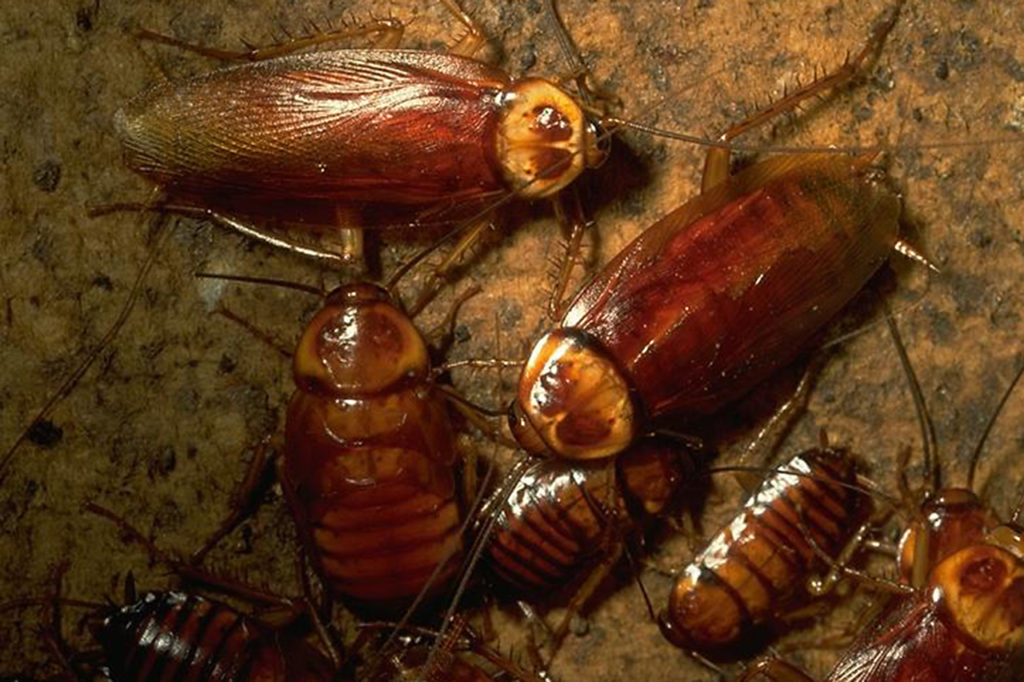
Cockroaches

This is one of the largest common cockroaches in Texas, reaching 1-1/2 to 2 inches. Adults are brown to reddish-brown with a pale brown or yellow border around the outside of the top of the head shield (pronotum). Wings cover the abdomen. They are 1 3/8 to 2 1/8 inches long. Early nymphal stages are grayish-brown. Later stages are reddish-brown.Egg cases (ootheca) are dark reddish-brown to brownish-black and about 3/8 inches. There usually are eight eggs on each side. The droppings of American cockroaches can be confused with mouse droppings, but are shorter with square (rather than pointed) tips.
Indoors, they are found in warm areas with high humidity—boiler rooms, basements,sewers or around drains and pipes. They are more common in large commercial buildings infesting food storage and preparation areas. Outdoors, they are found in moist, shady areas in yards, hollow trees, wood piles and mulch. They are frequent inhabitants of storm drains and sewers. Cockroaches have flattened bodies that allow them to enter homes through cracks around loose-fitting doors and windows, and where electric lines or pipes pass through walls. They are mainly active at night and hide in cracks and crevices during the day, preferring dark moist sites in attics and basements. Cockroaches eat almost anything including meats and grease, starchy foods, sweets, baked goods, leather, wallpaper paste, book bindings and sizing. Adults are capable of gliding flights.
Life Cycle: American cockroaches undergo simple metamorphosis (egg, nymph, adult). Female cockroaches glue or drop 1/4 inch long bean-like egg capsules (oothecae) containing about 15 eggs on or around infested areas. Nymphs hatch from the egg case that resemble small grayish-brown adult cockroaches without fully developed wings. Nymphs molt 10 to 13 times in over a year (470 to 600 days, depending on temperature) before becoming adults.